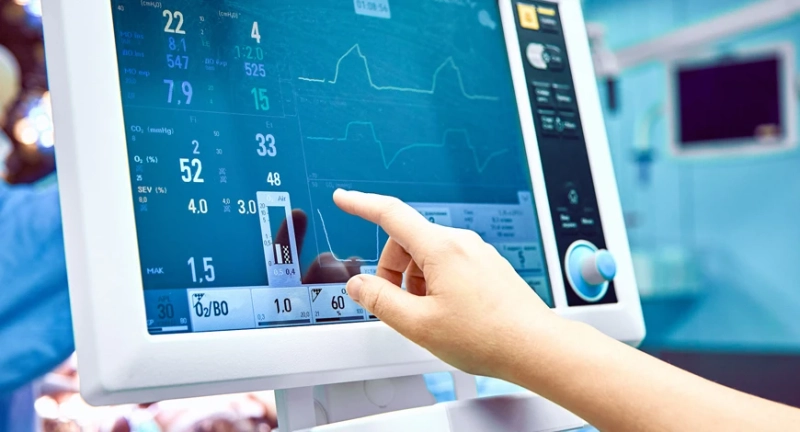https://hybridpedia.com/technology/how-to-get-synthetics-monitoring-to-work-in-new-relic/ In fields where radiation is a prominent concern, such as healthcare, nuclear energy, and industrial sectors, ensuring the safety of both workers and the public is of paramount importance. The use of monitoring equipment has emerged as an indispensable strategy to comprehensively manage and improve radiation safety. By employing advanced technological tools and systems, organizations can not only mitigate potential risks but also foster a culture of vigilance and responsible radiation management.
The Need for Radiation Safety Monitoring:
Radiation, though essential for various applications, poses inherent risks. Exposure to ionizing radiation can lead to detrimental health effects, ranging from acute radiation sickness to long-term genetic mutations and cancer. Thus, safeguarding personnel, the environment, and communities from excessive radiation exposure is not only a regulatory obligation but a moral responsibility.
Monitoring Equipment: Guardian of Safety:
Monitoring equipment forms the frontline of defense against radiation hazards. These sophisticated devices, often leveraging cutting-edge technology, enable continuous real-time measurement and analysis of radiation levels. Key types of monitoring equipment include:
Dosimeters:
Dosimeters are wearable devices that measure the cumulative dose of radiation an individual is exposed to over time. These devices, often used by radiation workers, provide crucial data for assessing personal exposure levels and ensuring that they remain within permissible limits.
Radiation Detectors:
Radiation detectors, such as Geiger-Muller counters and scintillation detectors, are instrumental in identifying the presence of ionizing radiation in a given area. They offer quick and reliable assessments of radiation intensity, aiding in the identification of potential hotspots.
Area Monitors:
For workplaces where radiation is a constant concern, area monitors are strategically placed to continuously measure radiation levels. These devices provide real-time data, triggering alarms if radiation levels exceed safe thresholds, allowing immediate corrective actions.
Environmental Monitoring Systems:
In settings where radiation may affect the environment, such as nuclear power plants, comprehensive environmental monitoring systems track radiation levels in the air, water, and soil. These systems ensure that potential releases of radioactive materials are promptly detected and managed.
Benefits of Monitoring Equipment:
Early Detection and Mitigation: Monitoring equipment provides real-time data, enabling prompt identification of elevated radiation levels. This allows for rapid responses and mitigation strategies, minimizing potential harm.
Data-Driven Decision Making: Accurate and reliable monitoring data empowers decision-makers to assess risks and allocate resources efficiently, enhancing overall radiation safety protocols.
Compliance and Accountability: Regulatory authorities often require organizations to maintain stringent radiation safety standards. Monitoring equipment aids in compliance by providing documented evidence of adherence to safety limits.
Worker Protection: Dosimeters and personal monitoring equipment prioritize the health and safety of radiation workers by tracking their individual exposure levels and prompting adjustments if necessary.
Public Confidence: Employing monitoring equipment demonstrates an organization's commitment to responsible radiation management, fostering public trust and confidence in their operations.
Challenges and Considerations:
While monitoring equipment offers substantial benefits, certain challenges must be acknowledged and addressed:
Calibration and Maintenance: Regular calibration and maintenance are vital to ensure the accuracy and reliability of monitoring equipment. Neglecting these tasks can lead to misleading readings and compromised safety.
Education and Training: Personnel using monitoring equipment must be adequately trained to interpret readings, respond to alarms, and take appropriate actions in case of abnormal radiation levels.
Data Management: Handling the significant volume of data generated by monitoring equipment requires efficient systems for storage, analysis, and reporting.
Integration with Protocols: Monitoring equipment should seamlessly integrate with established safety protocols, ensuring a cohesive and coordinated response to potential radiation incidents.
Conclusion
Monitoring equipment serves as a sentinel, tirelessly guarding against the invisible threats posed by radiation. Its integration into radiation safety frameworks not only meets regulatory requirements but also underscores a commitment to the wellbeing of personnel, communities, and the environment. By investing in state-of-the-art monitoring equipment, organizations pave the way for a safer future, where responsible radiation management is a cornerstone of their operations.


